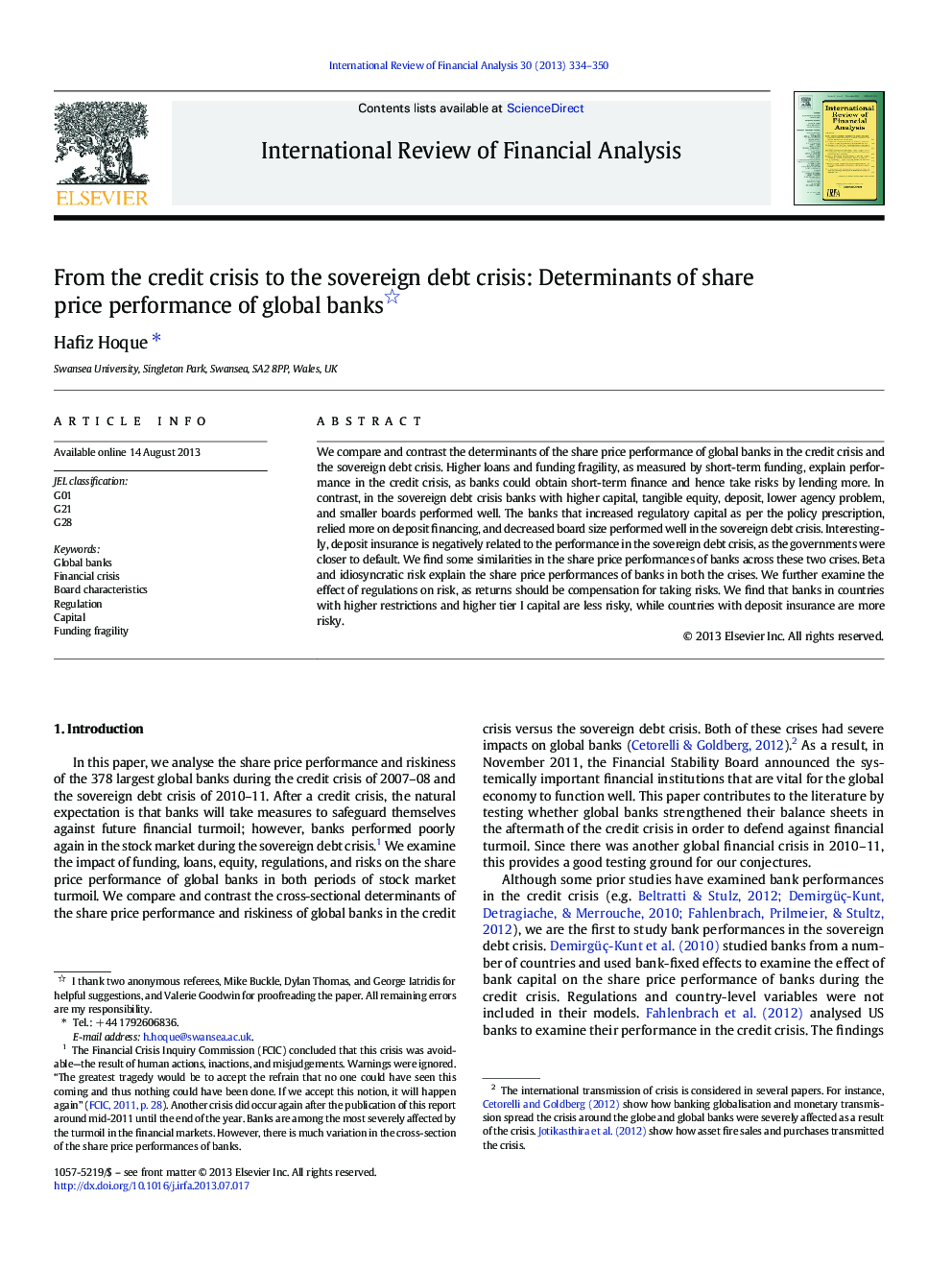| Article ID | Journal | Published Year | Pages | File Type |
|---|---|---|---|---|
| 5084966 | International Review of Financial Analysis | 2013 | 17 Pages |
Abstract
We compare and contrast the determinants of the share price performance of global banks in the credit crisis and the sovereign debt crisis. Higher loans and funding fragility, as measured by short-term funding, explain performance in the credit crisis, as banks could obtain short-term finance and hence take risks by lending more. In contrast, in the sovereign debt crisis banks with higher capital, tangible equity, deposit, lower agency problem, and smaller boards performed well. The banks that increased regulatory capital as per the policy prescription, relied more on deposit financing, and decreased board size performed well in the sovereign debt crisis. Interestingly, deposit insurance is negatively related to the performance in the sovereign debt crisis, as the governments were closer to default. We find some similarities in the share price performances of banks across these two crises. Beta and idiosyncratic risk explain the share price performances of banks in both the crises. We further examine the effect of regulations on risk, as returns should be compensation for taking risks. We find that banks in countries with higher restrictions and higher tier I capital are less risky, while countries with deposit insurance are more risky.
Related Topics
Social Sciences and Humanities
Economics, Econometrics and Finance
Economics and Econometrics
Authors
Hafiz Hoque,
